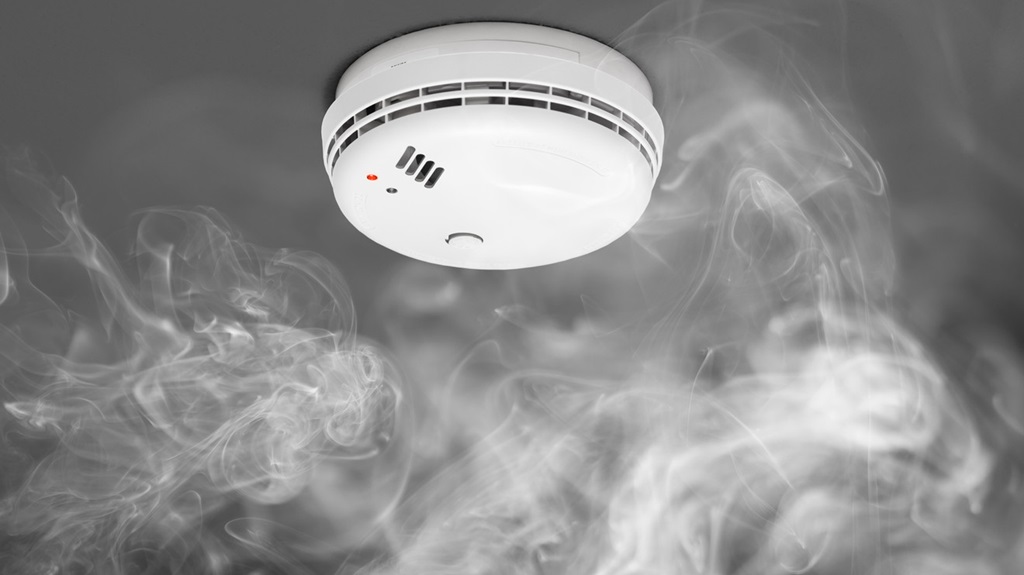
13 Jan How Many Smoke Detectors Do I Need by Law?
Having working smoke detectors in your home is absolutely crucial for safety. But how many do you actually need? The specific legal requirements vary depending on where you live, but some general guidelines apply across different states and municipalities. In this comprehensive guide, we’ll walk through how many smoke detectors do i need by law and recommendations so you can ensure your home is properly protected.
Overview of Smoke Detector Laws
Smoke detector laws exist to help prevent fire-related injuries and deaths. Having early detection and warning of a fire can give you precious extra minutes to safely evacuate.
In the United States, smoke detector requirements are set at the state or local level. This means the specific legal regulations will depend on where your home is located. However, there are some general trends:
- Most areas require smoke detectors on every level of the home, including basements.
- Smoke detectors are typically required inside all bedrooms.
- Many local laws mandate interconnection of smoke detectors. This means when one goes off, they all do.
- Smoke detectors may be required outside bedrooms or in hallways.
- Home additions or renovations often trigger a requirement to upgrade smoke detectors.
- Rental properties frequently have additional smoke detector requirements.
- Smoke detectors must be functional and properly maintained. It’s not enough to just have them installed.
Understanding your local laws is important. Many municipalities provide resources online to find the specific smoke detector requirements that apply to homes in your area.
Smoke Detector Recommendations
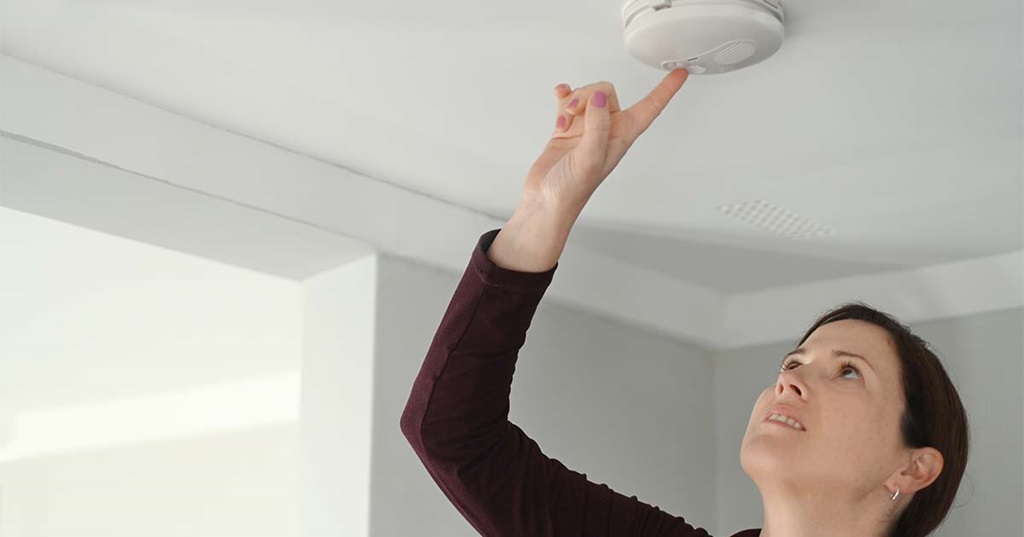
While smoke detector laws provide minimum legal standards, experts often recommend going beyond the basics for enhanced fire safety. Here are some best practice recommendations:
- Install smoke detectors in every bedroom – Have a smoke detector in every sleeping room even if it’s not required in your area. Fires often start at night, so early warning while you’re sleeping is critical.
- Include smoke detectors on every level – Put smoke detectors on every finished floor of the home, including basements and attics if they are lived in. Smoke and dangerous gases can spread rapidly via staircases.
- Interconnect all smoke detectors – When one smoke detector senses smoke, they should all sound an alarm. This gives the quickest warning possible throughout the home. Interconnection can be done via wiring or wireless technology.
- Add smoke detectors in bonus areas – For enhanced protection, add smoke detectors in bonus spaces like home offices, libraries, and dens where fires could easily start without quick notice.
- Install smoke detectors in main living areas – Living rooms, family rooms, and dining rooms should also have smoke detectors even if not legally required. Fires often begin in living spaces.
- Put smoke detectors in hallways and bedrooms – Hallways that adjoin bedrooms and living areas should have smoke detectors. They’ll quickly pick up smoke originating in other parts of the home.
- Include smoke detectors near laundry and utility rooms – These high-risk areas with electrical appliances and utilities should have nearby smoke detectors. Fires are more likely to occur in these spaces.
- Add smoke detectors on exterior walls – Cold exterior walls where smoke may not travel naturally are another recommended location. This helps detect fires that start outside or in wall spaces.
- Utilize dual sensor detectors – Smoke detectors with both ionization and photoelectric sensors offer improved fire detection. Using dual sensor detectors provides more comprehensive coverage.
Following these expert recommendations provides layered fire protection throughout the home. The more smoke detectors, the better in most cases when it comes to safety.
Specific Requirements by Room
Where exactly should you have smoke detectors within each room? Here are the typical placement recommendations and requirements:
Bedrooms
Smoke detectors are required inside every bedroom in most areas. Specific placement guidelines include:
- On the ceiling at least 4 inches away from any wall
- On the wall between 4 and 12 inches down from the ceiling
- If bedroom ceiling height exceeds 30 inches, detectors are required on the wall and the ceiling
Wall-mounted bedroom smoke detectors should be on the wall closest to the entry door when possible. This provides quickest detection as smoke enters the room from a fire outside in the hallway or rest of the home.
Hallways
Hallways that are longer than 40 feet and connect to bedrooms often require smoke detectors. Recommended placement includes:
- On the ceiling at least 4 inches from the wall
- On the wall between 4 to 12 inches from the ceiling
Smoke detectors in hallways should be positioned close to room entrances but away from heating and cooling vents or returns which could impact performance.
Living Spaces
While not always mandated, smoke detectors are recommended for living rooms, dens, libraries, family rooms, studies, and other living spaces. Ideal placement guidelines are:
- On the ceiling at least 4 inches from any wall
- On an exterior wall, not close to heating or cooling equipment
In larger open concept living spaces, positioning detectors 15 to 30 feet apart enhances coverage.
Kitchen
Kitchen smoke detector requirements and recommendations vary. Some jurisdictions require them due to cooking fire risks. Optimal placement is on the ceiling at least 10 feet away from the stove to avoid false alarms.
Laundry Rooms
Areas with electrical, natural gas, or propane appliances often necessitate nearby smoke detectors. Laundry room guidelines include:
- On the ceiling at least 4 inches from any wall
- At least 5 feet from washers, dryers or laundry sinks
Utility Rooms
Utility rooms with furnaces, hot water heaters, and electrical panels need smoke detectors located:
- The ceiling at least 4 inches away from walls
- Not directly above equipment or sinks where maintenance could set off false alarms
Basements
Finished or unfinished basements must have smoke detectors. In basements with ceiling height over 30 inches, detectors are required on the ceiling and upper walls. Recommended placements are:
- On the ceiling within 12 inches of staircase leading upstairs
- On the wall within 12 inches of staircase leading upstairs
- For unfinished ceilings, on beams halfway between the floor and ceiling
Smoke detectors should be installed at least 5 feet from furnaces or boilers. In larger open concept basements, detectors every 1000 square feet provide sufficient coverage.
Attics
If accessible attics are lived in or used for storage, smoke detectors are recommended or required in many areas. The guidelines are:
- On the underside of the roof at least 4 inches from any wall
- Avoid placement directly under roof eaves or vents
For unfinished attics with exposed rafters, mounting detectors to the bottoms of the rafters provides coverage.
Garages
Attached garages should have smoke detectors, especially if they contain utilities or connect directly to living spaces. The best placements are:
- The ceiling at least 4 inches from any wall
- At least 10 feet away from vehicle parking areas
Smoke detectors near garages boost safety as fires that start in vehicles or with combustibles may spread rapidly into the home.
Power and Interconnection
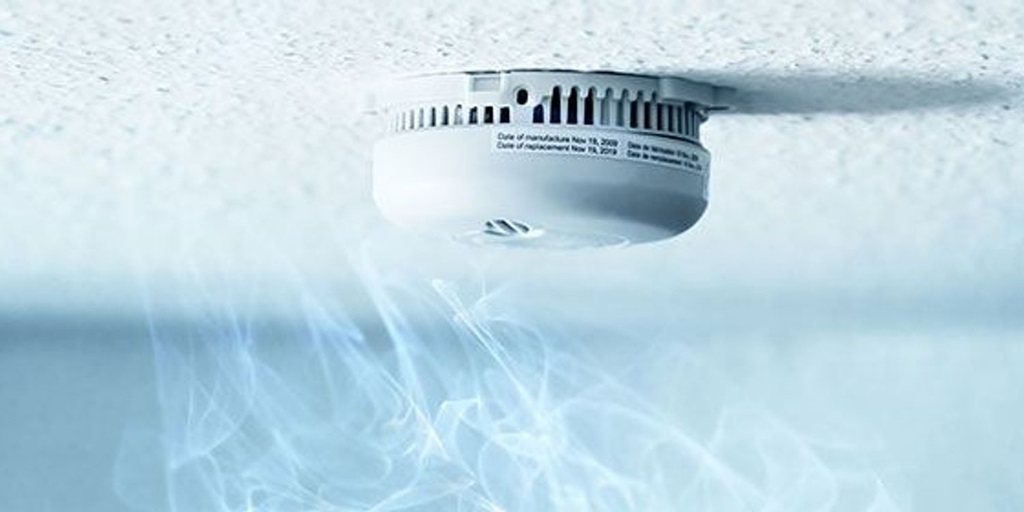
Smoke detector placement is only part of the requirements. You also need to ensure they have power and are interconnected.
Power Sources
Smoke detectors can be powered in several ways:
- Hardwired – Connected to household electrical wiring, either 120-volt power or a low-voltage setup. Required in new construction.
- Battery powered – Runs solely on a disposable 9V battery or sealed 10-year lithium battery. Easier for retrofits.
- Plug-in – Powered via an electrical outlet. Offers easy install without wiring.
- Hybrid – Combines battery backup with household wiring. Still works in a power outage. Often required for interconnection.
Hardwired and hybrid smoke detectors are best for reliability. Batteries must be replaced over time while electrical wiring provides consistent power.
Interconnection
Many jurisdictions require the interconnection of smoke detectors. This means when one detector goes off, all the smoke detectors in the home sound the alarm.
Interconnection can be accomplished by:
- Hardwiring – When professionally installed, smoke detectors can be interconnected via household wiring. This also facilitates integration with alarm systems.
- Wireless – Radio frequency technology allows wireless communication between detectors. Easier to retrofit existing homes.
- Dual mode – Utilizes both hardwired and wireless interconnection for redundancy. The preferred approach.
Interconnected smoke detectors using at least one hardwired methodology are recommended for whole home coverage. This ensures lifesaving alarm communication even if wireless signal is lost.
Special Considerations
Certain home layouts, construction methods, and living situations require additional smoke detector planning:
Multi-Level Homes
For multi-story homes, smoke detectors are required on every finished floor. This includes basements and attics if they are regularly occupied. The goal is protecting sleeping areas on upper levels if a fire starts below them.
Vaulted & Cathedral Ceilings
Vaulted or cathedral ceilings exceeding 30 inches in height require detectors on both the ceiling and upper walls. The wall units enhance coverage as smoke may avoid ceiling mounted detectors.
Obstructed Ceilings
In rooms with obstructed ceiling space, like exposed beams or ductwork, smoke detectors should be placed on walls. This provides visibility below architectural elements smoke might bypass.
Manufactured Homes
Factory built manufactured homes have specific smoke detector requirements. Placement guidelines take into account reduced ceiling heights and ventilation systems. Make sure to check laws for manufactured housing.
Rental Properties
Landlords are required to provide working smoke detectors in rental units, often in excess of owner-occupied homes. Tenants should verify adequate coverage when moving in.
Multifamily Homes
In multifamily homes like duplexes, smoke detectors are required in each unit or residence. Shared spaces also need coverage. Interconnection across units via hardwiring is recommended but often not required.
Smoke Detector Maintenance
Simply having properly located smoke detectors installed isn’t enough. You also need to perform regular maintenance to keep them in good working order. Here are the top smoke detector maintenance recommendations:
- Test monthly – Test all smoke detectors every month by pressing the “Test” button. Confirm flashing lights and alarm sounds.
- Replace batteries annually – Detectors with replaceable batteries need new ones yearly. Replace all batteries at once so they are on the same schedule.
- Clean periodically – Gently vacuum smoke detector covers 2-4 times a year to remove dust, dirt and debris that can impede performance.
- Replace per guidelines – Smoke detectors have a limited service life. Replace units every 8-10 years for best detection.
- Address faults immediately – If a smoke detector chirps or its light blinks, replace batteries or the entire unit right away.
- Have professionals inspect – During preventive home inspections, have an electrician verify smoke detector function and compliance.
- Update with renovations – If you remodel or add onto your home, examine whether smoke detector upgrades are needed.
Regular maintenance ensures you get the most protection from your smoke detectors. Don’t let them lapse into poor functioning.
Smoke Detector Positioning Mistakes to Avoid
While installing smoke detectors in compliant areas is important, placement is crucial too. Avoid these common smoke detector positioning errors:
- Next to HVAC vents where airflow could impact performance
- Within 3 feet of ceiling fans or other mechanical equipment
- Directly over stoves, ovens, or fireplaces where cooking smoke or steam could set them off
- Close to windows, exterior doors, or other openings that can impact sensor accuracy
- In “dead” air spaces like the peak of an A-frame ceiling where smoke may not accumulate
- In garages where exhaust fumes could cause false alarms
- Less than 4 inches from a wall or corner that can limit smoke intake
- Above cabinets, shelves, or other obstructions that can prevent smoke from entering
- Near plumbing or sprinkler pipes where leaks could damage detectors
- In extremely dusty, dirty or bug-infested areas that could hamper operation
Avoiding these problematic spots will help your smoke detectors work as designed. Proper placement is a key factor along with having an adequate total number installed in the right rooms.
Smoke Detector Installation Cost
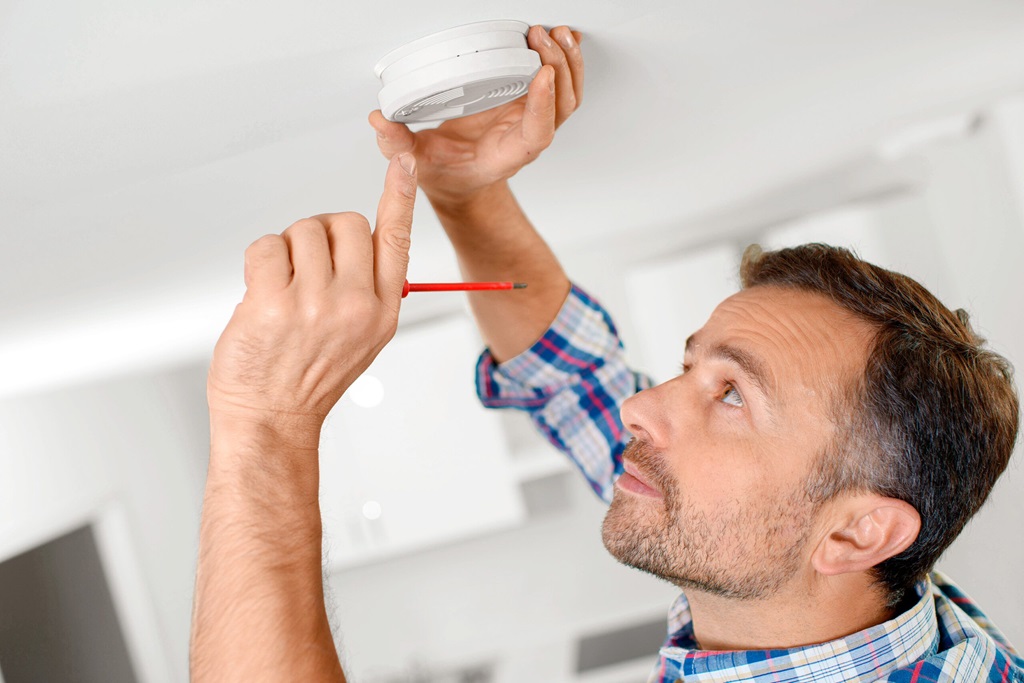
What can you expect to pay to have smoke detectors professionally installed or upgraded? Here are typical price ranges:
- Basic battery-powered detector – $15 to $40 per unit
- Basic plugin detector – $20 to $50 per unit
- Wireless interconnected battery unit – $40 to $100 per detector
- Hardwired with battery backup – $75 to $150 per detector
- Professional installation fees – $50 to $150 per hour
- Wiring interconnection of existing detectors – $200 to $500
- Full home smoke detector replacement – $1000 to $3000 depending on home size
You can save substantially by installing basic battery powered smoke detectors yourself in existing homes. But a full network of hardwired units with battery backup and professional installation provides the best protection and may be required in new construction. Shop around for quotes if undertaking large scale upgrades.
Smoke Detector Laws by State
Smoke detector requirements can vary significantly depending on the state you live in. Here is a high-level overview of some state-specific smoke detector laws:
- Alabama – Detectors required on every level, in hallways, and in each bedroom. Must be interconnected if new construction.
- California – Detectors mandated inside and outside each bedroom and on every level. Carbon monoxide detectors also required.
- Florida – Detectors required within every bedroom, outside each room, and on every level. Condos and apartments also regulated.
- Massachusetts – Smoke detectors must be installed on every level, including basements and are required to be interconnected.
- Michigan – Detectors mandated inside each bedroom and on every finished living level. Basements excluded.
- New York – Detectors with 10 year batteries mandated inside each bedroom and on every level of a home.
- Oregon – Smoke detectors are required inside every bedroom and within 15 feet outside each bedroom door.
- Texas – Detectors must be inside each sleeping room and also in the hallway or area immediately outside.
- Washington – Detectors are required in every sleeping room, outside each separate sleeping area, and on every level.
Be sure to check with your local fire marshal, building department, or municipal website to get specifics for homes in your area. Laws are continually updated.
Smoke Detector Codes for New Construction
If building a new home, smoke detector requirements follow the International Residential Code (IRC) or NFPA 72 which contain comprehensive regulations. Key new construction requirements include:
- Hardwired smoke detectors with battery backup on every level, in every bedroom, and in certain hallways
- Interconnection of all smoke detectors via hardwiring
- Usage of dual sensor detectors for optimal coverage
- Compliance with strict detector placement guidelines
- Integration with alarm systems and carbon monoxide detectors
- Smoke detection inside all habitable attics and basements
- Specialized smoke detectors around fireplaces and cooking appliances
- Specific requirements for vaulted ceilings, multi-level great rooms, and occupancy separation walls
New homes must pass stringent smoke detector inspections and codes to get an occupancy permit. Built in fire protection is a top priority.
Smoke Detectors in Mobile Homes
Mobile and manufactured homes have specialized smoke detector placement requirements that account for their unique construction. Here are key requirements that differ from typical homes:
- Smoke detectors required inside every bedroom and within 10 feet of bedroom doors
- Detectors also required in hallway/space connecting bedrooms and living area
- In homes lacking hallways, living room and kitchen detectors must be less than 21 feet apart
- No minimum distance from cooking appliances since kitchens and living rooms often combine
- Ceiling mounts okay with mobile home’s shorter ceiling heights
- Additional smoke detectors required around furnace and water heater areas
- Interconnection of detectors via hardwiring often not required
Make sure to consult the manufacturer’s guidelines and your local codes for your particular mobile or manufactured home. Construction and floor plans can vary.
Common Smoke Detector Myths
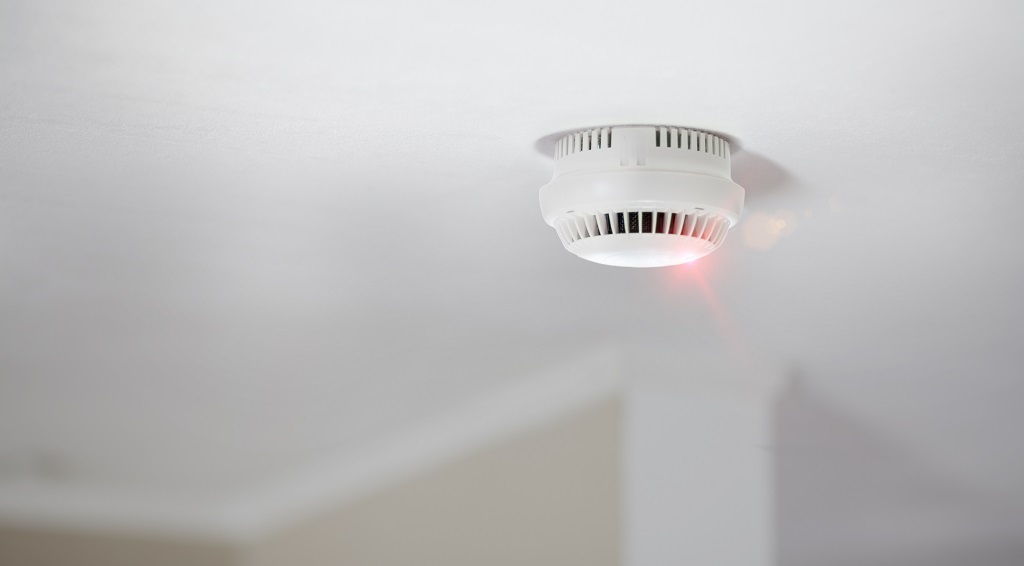
There are a variety of smoke detector myths and misconceptions out there that can lead to false sense of home fire safety. Here are some of the top smoke detector myths along with the factual realities:
Myth: Smoke detectors must be placed near air vents for airflow.
Reality: Air vents can disrupt smoke detector operation and should be avoided.
Myth: Smoke detectors mounted on the wall work just as well as ceiling mounts.
Reality: Ceiling mounted units detect smoke more efficiently as it rises and are preferred.
Myth: Smoke detectors don’t need to be interconnected if loudly audible.
Reality: Interconnection ensures simultaneous home-wide alarm if any detector senses smoke, regardless of audible volume.
Myth: Home insurance provides sufficient fire protection on its own.
Reality: Smoke detectors are legally required for occupancy and save lives, making insurance secondary.
Myth: Smoke detectors are nuisance alarms and can safely be disabled.
Reality: Disabled smoke detectors are very dangerous, violate fire codes, and put lives at risk in a fire emergency.
Myth: Smoke detectors require annual replacement to work right.
Reality: Smoke detectors are effective for 8-10 years when regularly maintained before replacement is needed.
Myth: Smoke detectors mounted in garages fully protect the living space.
Reality: Additional detectors are required inside the home even with garage coverage.
Myth: Smoke detectors mounted upside down work fine.
Reality: Upside down units can collect dust and debris in the sensors, impairing sensitivity. Proper orientation is needed.
Myth: Expensive high-tech smoke detectors work better than basic models.
Reality: detectors as low as $10 provide sufficient life-saving warnings if installed per codes in the right spots.
Dispelling these fictional myths and relying on facts and manufacturer/code guidelines ensures your home and family is properly protected against deadly home fires.
FAQs
What is the difference between ionization and photoelectric smoke detectors?
Ionization smoke detectors use a small amount of radioactive material to detect smoke particles, while photoelectric detectors use a beam of light. Ionization detectors respond faster to flaming fires, while photoelectric models are better at detecting smoldering fires. Dual sensor detectors combine both technologies for the widest coverage.
Where should you avoid placing smoke detectors?
Avoid mounting detectors directly over stoves, near HVAC vents, close to windows and doors, or in dead air spaces where smoke may not reach the sensor. All these areas can disrupt proper operation.
Do smoke detectors expire?
Yes, smoke detectors have a limited lifespan. Older units should be replaced every 8-10 years to ensure accurate detection. Always replace units according to manufacturer’s date code guidelines.
What causes false smoke detector alarms?
Steam, cooking smoke, cigarette smoke, dust buildup, insect nests, temperature extremes, and Sensor contamination can all trigger unintended alarms. Proper placement, ventilation, and regular cleaning help minimize false alarms.
How can you test a smoke detector?
Smoke detectors should be tested monthly by pushing the “Test” button until the alarm sounds. This verifies sensitivity, electronics, battery power, and function. Replace units immediately if no alarm sounds during testing.


No Comments